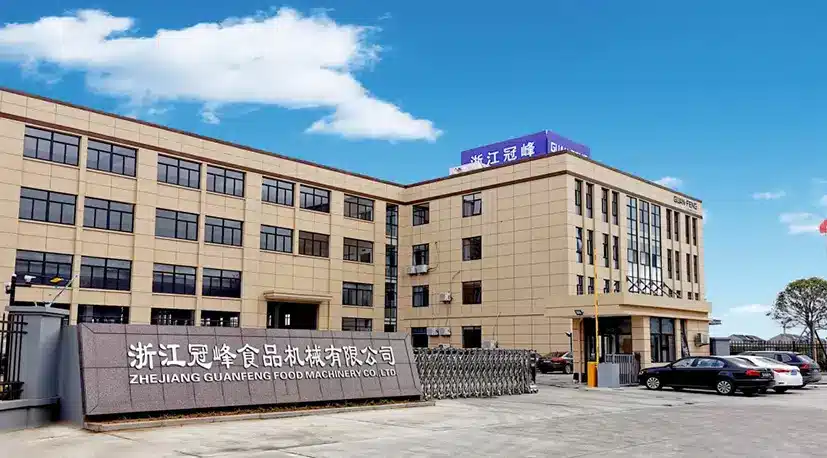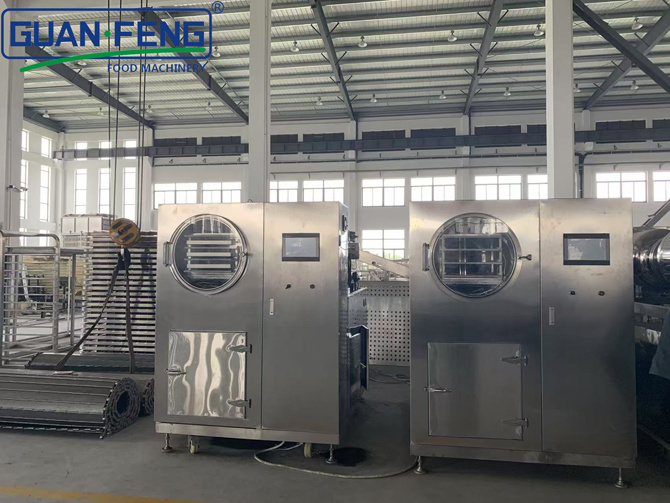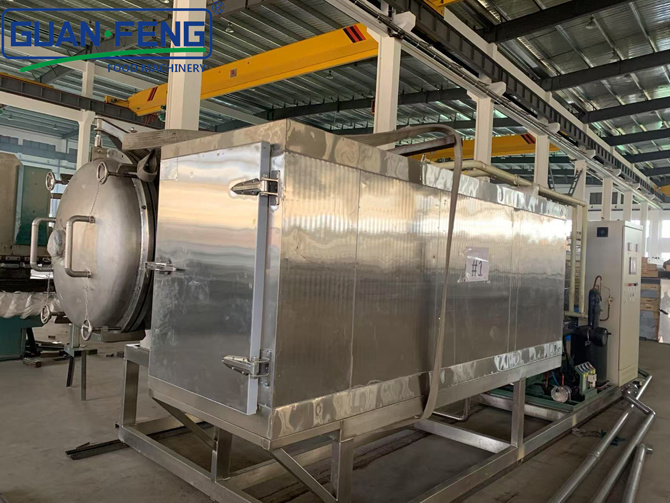BLOG
Focus on hot topics, real-time dynamics
Innovative Industries Leveraging Vacuum Freeze Dryers for Enhanced Product Preservation
Innovative Industries Leveraging Vacuum Freeze Dryers for Enhanced Product Preservation
Table of Contents
- 1. Introduction to Vacuum Freeze Drying
- 2. What is Vacuum Freeze Drying?
- 3. How Vacuum Freeze Drying Works
- 4. Key Applications in the Pharmaceutical Industry
- 5. Food Processing Applications of Vacuum Freeze Dryers
- 6. Biotechnology Uses of Vacuum Freeze Drying
- 7. Advantages of Vacuum Freeze Drying
- 8. Challenges and Considerations When Using Vacuum Freeze Dryers
- 9. The Future of Vacuum Freeze Drying Technology
- 10. Conclusion
- 11. FAQs
1. Introduction to Vacuum Freeze Drying
Vacuum freeze drying is a **highly advanced preservation technique** that has gained significant attention in recent years. Industries ranging from pharmaceuticals to food processing are increasingly leveraging this technology, recognizing its potential for maintaining the integrity and quality of sensitive products. This article delves into the intricacies of vacuum freeze drying, exploring its applications, advantages, and future potential.
2. What is Vacuum Freeze Drying?
Vacuum freeze drying, also known as lyophilization, is a process in which water is removed from a product after it has been frozen and placed under a vacuum. This method allows for the sublimation of ice directly into vapor without passing through the liquid phase, thus preserving the product’s physical and chemical properties. It is particularly effective for materials that are sensitive to heat, making it ideal for preserving pharmaceuticals, food, and biological materials.
The Science Behind Lyophilization
The lyophilization process consists of three main stages: **freezing**, **primary drying**, and **secondary drying**. Each stage is crucial for ensuring that the final product is stable and retains its intended properties.
3. How Vacuum Freeze Drying Works
The vacuum freeze drying process can be broken down into several steps, each serving a critical role in the overall effectiveness of the technique.
Step 1: Freezing the Product
The initial step involves freezing the product at low temperatures, typically between -40°C to -80°C. This step is crucial because it transforms the moisture within the product into ice.
Step 2: Primary Drying
After freezing, the vacuum environment is created, which lowers the pressure. This allows ice to sublimate directly into vapor, effectively removing the majority of the water content. This stage can typically remove about 95% of the moisture.
Step 3: Secondary Drying
In this final stage, any remaining moisture is removed to ensure product stability. This is achieved by gradually raising the temperature while maintaining the vacuum. The end result is a dry product that can be easily rehydrated.
4. Key Applications in the Pharmaceutical Industry
The pharmaceutical industry has been one of the most significant beneficiaries of vacuum freeze drying technology. The ability to maintain the efficacy of sensitive compounds, such as vaccines and antibiotics, is crucial for patient safety and treatment effectiveness.
Preservation of Biologics
Biologics, which include vaccines and monoclonal antibodies, often require precise conditions for storage and transportation. Vacuum freeze drying helps in stabilizing these products, allowing for a longer shelf life and reducing the need for cold chain logistics.
Development of Instant Pharmaceuticals
Vacuum freeze drying is also pivotal in developing instant pharmaceuticals that can be reconstituted with water before use. This convenience is particularly beneficial in emergency medicine, where rapid administration is critical.
5. Food Processing Applications of Vacuum Freeze Dryers
In the food industry, vacuum freeze drying is revolutionizing how we preserve and package food products. The ability to retain flavors, nutrients, and textures makes it an invaluable tool for food manufacturers.
Enhancing Shelf Life
Vacuum freeze drying significantly extends the shelf life of food products without the need for preservatives. Freeze-dried fruits, vegetables, and meals can last for years while maintaining their original taste and nutritional value.
Convenience in Meal Preparation
With the rise of outdoor activities and the demand for convenient meal solutions, vacuum freeze dried products are becoming increasingly popular. These lightweight, easily transportable foods are perfect for camping, hiking, and emergency preparedness.
6. Biotechnology Uses of Vacuum Freeze Drying
Biotechnology is another field where vacuum freeze drying demonstrates remarkable potential. The preservation of enzymes, proteins, and other biological materials ensures their viability for research and application.
Stability of Enzymes and Proteins
Many enzymes and proteins are sensitive to heat and moisture. Vacuum freeze drying helps maintain their structural integrity, allowing for their subsequent use in various applications, including diagnostic tests and therapeutics.
Storage of Culture Media
In microbiology, vacuum freeze drying is used to store culture media and microbial strains. This method allows for long-term storage while ensuring that the viability of the organisms is preserved.
7. Advantages of Vacuum Freeze Drying
The advantages of vacuum freeze drying extend far beyond mere preservation. This method offers numerous benefits across various industries.
Retention of Nutritional Value
One of the most significant advantages is the **retention of nutritional value**. Unlike traditional drying methods, which often involve heat, vacuum freeze drying helps maintain vitamins, minerals, and antioxidants.
Improved Product Quality
Products processed through vacuum freeze drying exhibit superior quality in terms of texture, flavor, and color. This quality retention is essential, particularly in the food and pharmaceutical industries.
Extended Shelf Life
Vacuum freeze-dried products can last significantly longer than their non-dried counterparts, reducing waste and making storage more efficient.
8. Challenges and Considerations When Using Vacuum Freeze Dryers
While vacuum freeze drying offers numerous advantages, it is not without its challenges. Understanding these challenges is crucial for industries considering its implementation.
High Initial Investment
The cost of vacuum freeze drying equipment can be substantial, making it a significant investment for many companies, particularly small to medium-sized enterprises.
Process Complexity
The vacuum freeze drying process is complex and requires specialized knowledge for monitoring and operation. Proper training is essential to ensure optimal results.
9. The Future of Vacuum Freeze Drying Technology
Looking ahead, the future of vacuum freeze drying technology appears promising. Continuous advancements in technology and processes are likely to enhance efficiency, reduce costs, and expand applications across various sectors.
Integration with Other Technologies
Future developments may include integrating vacuum freeze drying with other technologies, such as automation and artificial intelligence, to streamline production processes and improve output quality.
Environmental Considerations
As industries aim for more sustainable practices, vacuum freeze drying technology is expected to evolve to minimize energy consumption and waste, aligning with global sustainability goals.
10. Conclusion
In summary, vacuum freeze drying is transforming several industries by providing efficient and effective preservation solutions. As businesses increasingly recognize its potential, the demand for vacuum freeze dryers is only expected to grow. With its ability to maintain product quality, enhance shelf life, and offer versatility in applications, vacuum freeze drying is set to become a cornerstone of innovation in food processing, pharmaceuticals, and biotechnology.
11. FAQs
What industries commonly use vacuum freeze drying?
Many industries utilize vacuum freeze drying, including pharmaceuticals, food processing, biotechnology, and cosmetics.
How does vacuum freeze drying differ from traditional drying methods?
Unlike traditional drying methods that use heat, vacuum freeze drying removes moisture by sublimation, preserving product quality and nutrients.
Are vacuum freeze dried products safe to consume?
Yes, vacuum freeze dried products are safe to consume, provided they are produced under proper conditions and stored appropriately.
What is the typical shelf life of vacuum freeze dried products?
Vacuum freeze dried products can last anywhere from several months to years, depending on the product and storage conditions.
Can vacuum freeze drying be used for all types of products?
While vacuum freeze drying is effective for many products, certain materials may not be suitable for this method due to their specific characteristics or moisture content.
By understanding and leveraging the capabilities of vacuum freeze drying, industries can enhance their product offerings, ensuring quality and longevity in an ever-evolving market.
Hot Tags:
PREVIOUS:
Contact Us
E-mail:
sales@syguanfeng.com
Tel:
+86 15088506234
Address:
South Industrial Park of Dongguan, Shangyu District, Shaoxing City,Zhejiang Province,China.
GUANFENG, your customization experts!
GUANFENG FOOD MACHINERY - leading supplier of integrated food processing solutions
Copyright© 2024 ZHEJIANG GUANFENG FOOD MACHINERY CO.,LTD.










